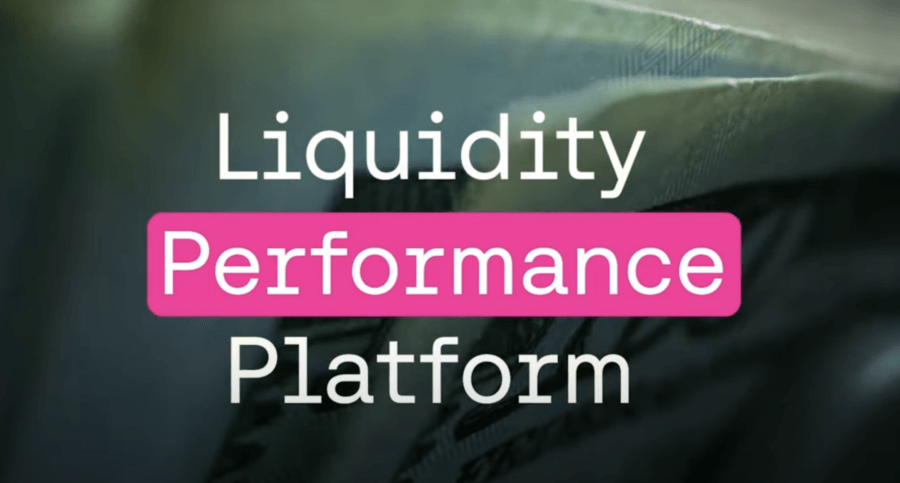Success Story
FrieslandCampina’s Route to a Higher Treasury Level

FrieslandCampina has branch offices in 34 countries and employs around 23,000 people. It is not a listed company, but a cooperative, in which the member dairy farmers in the Netherlands, Germany and Belgium fully own the company. “We therefore operate a bit differently from listed multinationals,” says Jeroen Brieffies, Head of Treasury Operations at Royal FrieslandCampina. “We have an ‘owners mindset’, with a clear culture focused on farmers products.”
Complex organization
Brieffies returned to the Netherlands around five years ago, after being stationed in Switzerland. “At that time, we wanted to benchmark our treasury organization and asked Zanders to do a strategic analysis for us. It appeared that we performed very well on funding and on risk management but were lacking in support towards the operational side of the business. We then started a journey from being a corporate policy maker towards a strategic and pro-active corporate treasury department with a centralized operations team as part of a new organizational setup.”
“Before we started this project, we had a lot of intercompany flows. Everybody was sending invoices to each other and at the end of the month we had to see if it all matched well. But now, instead of waiting until the end of the month, we have a continuous process and some dedicated people in intercompany teams are working on that. With the Kyriba tool we’re able to centralize all cash, which makes it much easier to do our day-to-day cash management. We paid the bank for having an in-house bank and there was a notional cash pool. If you have a system to take care of that, it makes many things a lot easier and is cost-saving too.”
During this period, a lot of things started to move at FrieslandCampina. The organization had already started a project called Summit, to standardize all SAP instances within the whole company, which required all entities to comply to these standards. At the same time, financial shared service centers (FSSCs) were being set up, in which all payments, collections and other administrative activities were centralized. The rise of these new developments led to the idea of setting up a treasury operations department within corporate treasury. This would support the business more in its daily operations, and ensure treasury could standardize the payment and collections processes. The first step towards the support of the FSSCs was the implementation of TIS as a payment hub.
Because of his time in Switzerland, Brieffies came up with the project name Jungfrau – one of the famous mountain tops in the Alps. That mountain can now be reached easily, after a complex building process of a railway – making it an appropriate metaphor for the difficult process you have to go through in order to create more efficiency in the end.
Everest project
The new developments and objectives led to the start of a project named ‘Everest’. Brieffies explains: “the implementation of TIS kickstarted an acceleration towards an optimal global payment and collection process that would take less time, be less erroneous and less costly, using an efficient and lean IT infrastructure–and that’s why we called this next big step project Everest.”
“We first decided to set up some workshops with FSSC’s, finance & reporting, tax and corporate legal, to point out the challenges we had in this process,” Brieffies continues. It then turned out that the whole internal process offered challenges too. “As a dairy company we are like an oil refinery; milk comes in and we make all kinds of components that we use for several products. So, both logistically and financially we have to make sure that all this follows the correct route. We therefore decided to start with the intercompany netting first. Then we’d have a solid base metaphorically called ‘Base camp’; a standardized ERP-system, FSSCs to centralize our payments and collections, and a payment tool. And once we have intercompany netting, we want to move up to an inhouse bank to take care of all the internal payments.” Corporate treasury selected Coprocess as their global netting tool provider for matching, dispute resolution, and monthly netting of around one million intercompany invoices a year.
On top of that, FrieslandCampina is currently looking at the opportunity to set up a payments and collections factory, to do its payments and collections ‘on behalf of’ (POBO and COBO). “The challenge in that is mostly the collections,” says Zanders consultant Bart Timmerman. “You can direct payments yourself, butit’s not certain on what account clients will do their payment and what references they use, if any. So, reconciliation of incoming payments is in that sense a big challenge.”
A dedicated project manager
Due to this reconciliation challenge, Brieffies hired Zanders for support. “We asked Zanders to draft a blueprint and to support us in the implementation of the Kyriba tool we selected as our new treasury management system. When we set up treasury operations and started with TIS as our payment hub, we noticed that we had a tool within our FSSCs, but we needed manpower in corporate treasury to support it. The corporate treasury team realized that if they really wanted to make a change and get the envisioned results, each team member needed to have focus.”
A dedicated treasury operations team was created, which included a cash and currency manager, a treasury systems manager and a treasury project manager. Next to the new team setup, another major foundation to this transformation was the development of a treasury IT strategy that set some clear guidelines for the selection of new systems. Choosing cloud solutions was particularly important in future-proofing the treasury operations. This allowed treasury to reduce overall dependence on internal IT, and always have an up-to-date version in order to improve speed and decisiveness.
“A project like Everest could not have been realized without a dedicated project manager,” Brieffies notes. “My colleague Marije Siebenga filled in that role and was the driving force behind this project. And at the end we could elevate it all up to a higher level.” “Project management was one of the key success factors of this project,” says Zanders’ Timmerman. “It was very clear what direction the company wanted to go, what system it needed to get there and what Zanders’ and Kyriba’s roles were.” Nick Clare, responsible for Kyriba’s European channel sales agrees: “All issues were sorted out quickly, mostly because FrieslandCampina’s Treasury was very vendor-savvy. They always took full ownership of the solution. That’s a role model.”
Having everyone involved
This proactive approach from FrieslandCampina’s treasury even saw it, together with Kyriba, being nominated for the EuroFinance digital transformation award. “The scale of the company is vast and very complex with hundreds of entities, so it’s commendable what its treasury has done,” says Kyriba’s Clare. “Friesland-Campina now has a platform that they can scale.”
Guided by the blueprint, FrieslandCampina implemented the new system itself. And that’s a role model for how system implementation should be done, according to Timmerman: “At the end, the company needs to adopt and know the system. So, after teaching them the tricks, it’s better for our clients to work with the system themselves.”
This is a sentiment that Brieffies agrees with: “All users had to get used to the system which sometimes resulted in a critical stance, but now that their processes are automated, they are very enthusiastic and supportive. In these kinds of projects, it’s important to have everyone involved, like the back-office team, finance and IT. They need to support your solution–that’s often underestimated.”
Mutual dependency
Using a treasury solution like Kyriba should lead to improved efficiencies and the benefits of having fewer repetitive tasks. This is something that applies to the rest of the business too, thanks to Project Everest. “Before we started this project, we had a lot of intercompany flows,” Brieffies says. “Everybody was sending invoices to each other and at the end of the month we had to see if it all matched well. But now, instead of waiting until the end of the month, we have a continuous process and some dedicated people in intercompany teams are working on that. With the Kyriba tool we’re able to centralize all cash, which makes it much easier to do our day-to-day cash management. We paid the bank for having an in-house bank and there was a notional cash pool. If you have a system to take care of that, it makes many things a lot easier and is cost-saving too.”
This is the reason FrieslandCampina has its own treasury system manager connecting all systems within the company to the treasury system. “There is now a mutual dependency,” continues Brieffies. “In the past, treasury was dependent on the business delivering information, but now it’s also the other way around. The business wants to know its in-house balance.”
Next steps
In terms of treasury maturity, one of FrieslandCampina’s goals was to undergo a transformation. “We did our strategic benchmarking in 2015 and made a road map for the coming years,” Brieffies explains. “But now we would like to see what progress we have made and where we are compared to peer corporate treasuries.”
“It’s good to do a treasury scan regularly, because treasury technology is changing fast and peers are developing too,” comments Zanders’ Timmerman. “So – using the metaphor – after a few years the mountain tops will be higher.”
Brieffies is now working with his department on a pilot to set up virtual bank accounts. “We see that as a necessity to have the COBO in place. We need to reconcile what we received for selling specific dairy product, such as yoghurt, cheese or ingredients, in order to provide the correct management information.”
FrieslandCampina has branch offices in 34 countries and employs around 23,000 people. It is not a listed company, but a cooperative, in which the member dairy farmers in the Netherlands, Germany and Belgium fully own the company. “We therefore operate a bit differently from listed multinationals,” says Jeroen Brieffies, Head of Treasury Operations at Royal FrieslandCampina. “We have an ‘owners mindset’, with a clear culture focused on farmers products.”
Complex organization
Brieffies returned to the Netherlands around five years ago, after being stationed in Switzerland. “At that time, we wanted to benchmark our treasury organization and asked Zanders to do a strategic analysis for us. It appeared that we performed very well on funding and on risk management but were lacking in support towards the operational side of the business. We then started a journey from being a corporate policy maker towards a strategic and pro-active corporate treasury department with a centralized operations team as part of a new organizational setup.”
“Before we started this project, we had a lot of intercompany flows. Everybody was sending invoices to each other and at the end of the month we had to see if it all matched well. But now, instead of waiting until the end of the month, we have a continuous process and some dedicated people in intercompany teams are working on that. With the Kyriba tool we’re able to centralize all cash, which makes it much easier to do our day-to-day cash management. We paid the bank for having an in-house bank and there was a notional cash pool. If you have a system to take care of that, it makes many things a lot easier and is cost-saving too.”
During this period, a lot of things started to move at FrieslandCampina. The organization had already started a project called Summit, to standardize all SAP instances within the whole company, which required all entities to comply to these standards. At the same time, financial shared service centers (FSSCs) were being set up, in which all payments, collections and other administrative activities were centralized. The rise of these new developments led to the idea of setting up a treasury operations department within corporate treasury. This would support the business more in its daily operations, and ensure treasury could standardize the payment and collections processes. The first step towards the support of the FSSCs was the implementation of TIS as a payment hub.
Because of his time in Switzerland, Brieffies came up with the project name Jungfrau – one of the famous mountain tops in the Alps. That mountain can now be reached easily, after a complex building process of a railway – making it an appropriate metaphor for the difficult process you have to go through in order to create more efficiency in the end.
Everest project
The new developments and objectives led to the start of a project named ‘Everest’. Brieffies explains: “the implementation of TIS kickstarted an acceleration towards an optimal global payment and collection process that would take less time, be less erroneous and less costly, using an efficient and lean IT infrastructure–and that’s why we called this next big step project Everest.”
“We first decided to set up some workshops with FSSC’s, finance & reporting, tax and corporate legal, to point out the challenges we had in this process,” Brieffies continues. It then turned out that the whole internal process offered challenges too. “As a dairy company we are like an oil refinery; milk comes in and we make all kinds of components that we use for several products. So, both logistically and financially we have to make sure that all this follows the correct route. We therefore decided to start with the intercompany netting first. Then we’d have a solid base metaphorically called ‘Base camp’; a standardized ERP-system, FSSCs to centralize our payments and collections, and a payment tool. And once we have intercompany netting, we want to move up to an inhouse bank to take care of all the internal payments.” Corporate treasury selected Coprocess as their global netting tool provider for matching, dispute resolution, and monthly netting of around one million intercompany invoices a year.
On top of that, FrieslandCampina is currently looking at the opportunity to set up a payments and collections factory, to do its payments and collections ‘on behalf of’ (POBO and COBO). “The challenge in that is mostly the collections,” says Zanders consultant Bart Timmerman. “You can direct payments yourself, butit’s not certain on what account clients will do their payment and what references they use, if any. So, reconciliation of incoming payments is in that sense a big challenge.”
A dedicated project manager
Due to this reconciliation challenge, Brieffies hired Zanders for support. “We asked Zanders to draft a blueprint and to support us in the implementation of the Kyriba tool we selected as our new treasury management system. When we set up treasury operations and started with TIS as our payment hub, we noticed that we had a tool within our FSSCs, but we needed manpower in corporate treasury to support it. The corporate treasury team realized that if they really wanted to make a change and get the envisioned results, each team member needed to have focus.”
A dedicated treasury operations team was created, which included a cash and currency manager, a treasury systems manager and a treasury project manager. Next to the new team setup, another major foundation to this transformation was the development of a treasury IT strategy that set some clear guidelines for the selection of new systems. Choosing cloud solutions was particularly important in future-proofing the treasury operations. This allowed treasury to reduce overall dependence on internal IT, and always have an up-to-date version in order to improve speed and decisiveness.
“A project like Everest could not have been realized without a dedicated project manager,” Brieffies notes. “My colleague Marije Siebenga filled in that role and was the driving force behind this project. And at the end we could elevate it all up to a higher level.” “Project management was one of the key success factors of this project,” says Zanders’ Timmerman. “It was very clear what direction the company wanted to go, what system it needed to get there and what Zanders’ and Kyriba’s roles were.” Nick Clare, responsible for Kyriba’s European channel sales agrees: “All issues were sorted out quickly, mostly because FrieslandCampina’s Treasury was very vendor-savvy. They always took full ownership of the solution. That’s a role model.”
Having everyone involved
This proactive approach from FrieslandCampina’s treasury even saw it, together with Kyriba, being nominated for the EuroFinance digital transformation award. “The scale of the company is vast and very complex with hundreds of entities, so it’s commendable what its treasury has done,” says Kyriba’s Clare. “Friesland-Campina now has a platform that they can scale.”
Guided by the blueprint, FrieslandCampina implemented the new system itself. And that’s a role model for how system implementation should be done, according to Timmerman: “At the end, the company needs to adopt and know the system. So, after teaching them the tricks, it’s better for our clients to work with the system themselves.”
This is a sentiment that Brieffies agrees with: “All users had to get used to the system which sometimes resulted in a critical stance, but now that their processes are automated, they are very enthusiastic and supportive. In these kinds of projects, it’s important to have everyone involved, like the back-office team, finance and IT. They need to support your solution–that’s often underestimated.”
Mutual dependency
Using a treasury solution like Kyriba should lead to improved efficiencies and the benefits of having fewer repetitive tasks. This is something that applies to the rest of the business too, thanks to Project Everest. “Before we started this project, we had a lot of intercompany flows,” Brieffies says. “Everybody was sending invoices to each other and at the end of the month we had to see if it all matched well. But now, instead of waiting until the end of the month, we have a continuous process and some dedicated people in intercompany teams are working on that. With the Kyriba tool we’re able to centralize all cash, which makes it much easier to do our day-to-day cash management. We paid the bank for having an in-house bank and there was a notional cash pool. If you have a system to take care of that, it makes many things a lot easier and is cost-saving too.”
This is the reason FrieslandCampina has its own treasury system manager connecting all systems within the company to the treasury system. “There is now a mutual dependency,” continues Brieffies. “In the past, treasury was dependent on the business delivering information, but now it’s also the other way around. The business wants to know its in-house balance.”
Next steps
In terms of treasury maturity, one of FrieslandCampina’s goals was to undergo a transformation. “We did our strategic benchmarking in 2015 and made a road map for the coming years,” Brieffies explains. “But now we would like to see what progress we have made and where we are compared to peer corporate treasuries.”
“It’s good to do a treasury scan regularly, because treasury technology is changing fast and peers are developing too,” comments Zanders’ Timmerman. “So – using the metaphor – after a few years the mountain tops will be higher.”
Brieffies is now working with his department on a pilot to set up virtual bank accounts. “We see that as a necessity to have the COBO in place. We need to reconcile what we received for selling specific dairy product, such as yoghurt, cheese or ingredients, in order to provide the correct management information.”








 Founded
Founded  Headquarters
Headquarters  Industry
Industry 

